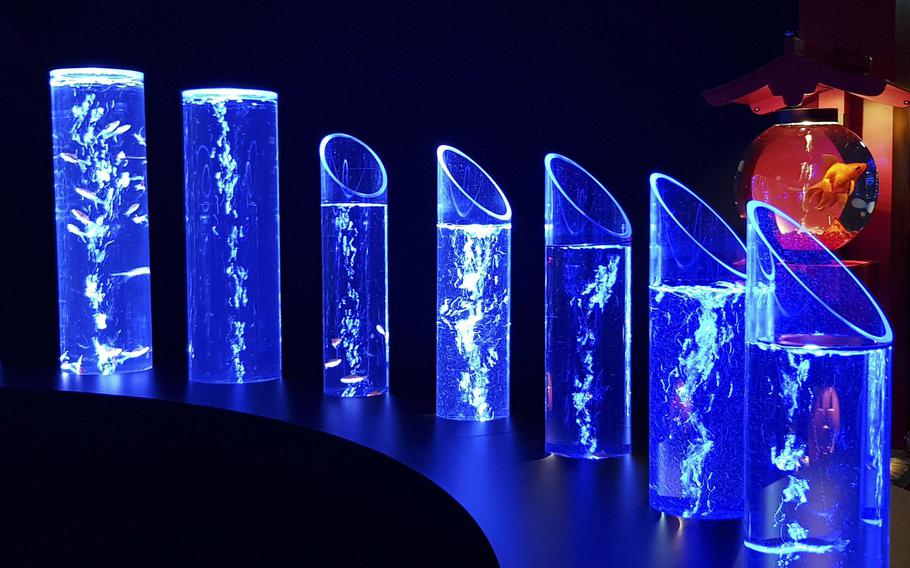
The Art Aquarium in Tokyo's high-end Ginza shopping district hosts artistic displays said to represent the popularity of goldfish during Japan’s Edo period. (Juan King/Stars and Stripes)
More than 30,000 goldfish are the main attraction at a “living art” museum in Ginza, the high-end shopping district in central Tokyo.
The Art Aquarium opened in 2007 with traveling exhibits shown throughout Japan. It is managed by Hidetomo Kimura, who thinks of the fish as live artworks. The museum’s permanent location opened in May 2022 at the Ginza Mitsukoshi New Building.
The space hosts many artistic fish tank displays said to represent the popularity of goldfish during Japan’s Edo period. Goldfish are not native to Japan and were brought over in the 1500s by Chinese traders.
At the first-floor entrance of the Mitsukoshi building, there is a ticket vending machine with an attendant nearby. Adult tickets cost 2,400 yen, or about $17.60, each but entry for my son, who is in elementary school, was free.
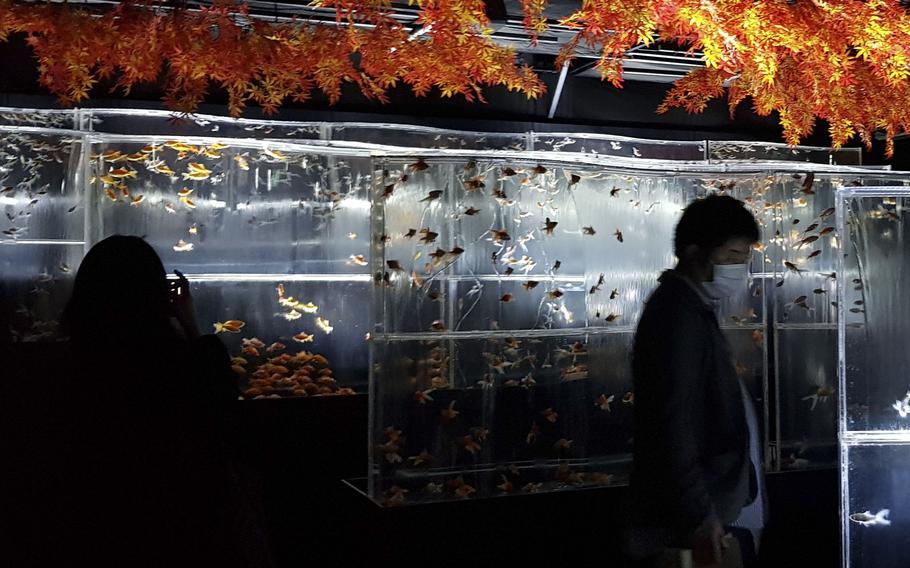
The Art Aquarium in Tokyo's high-end Ginza shopping district hosts artistic displays said to represent the popularity of goldfish during Japan’s Edo period. (Juan King/Stars and Stripes)
Once at the museum’s ninth-floor entrance, my family and I stepped into a quiet, dim area with fish tanks of varied shapes and sizes lit by multicolored lights.
The “Goldfish Corridor” is a walkway where tall, tubular tanks backlit in red, green, blue and pink held various species of the freshwater fish.
Some of the fish we saw included the Ping Pong Pearl goldfish, a name given due to the roundness of its body and pearl-like scales.
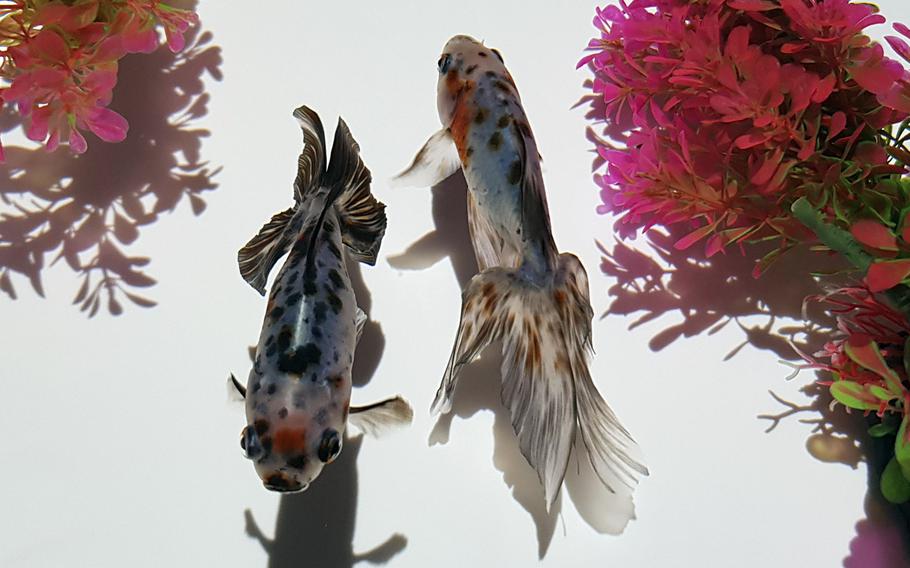
More than 30,000 goldfish are the main attraction at the Art Aquarium, “living art” museum in Tokyo's Ginza district. (Juan King/Stars and Stripes)
The Tosakin, also known as the “queen of goldfish,” has a fanned tail to accompany its elegant and graceful appearance. The cartoonish Celestial Eye is similar to but not as large as the even weirder Bubble Eye goldfish.
Farther into the aquarium, visitors get a cool top-view of fish inside unique clear encasements that are lit from above and give an appearance of overflowing water. Looking into one of these square cases from the side also made the fish look half-in and half-out of water.
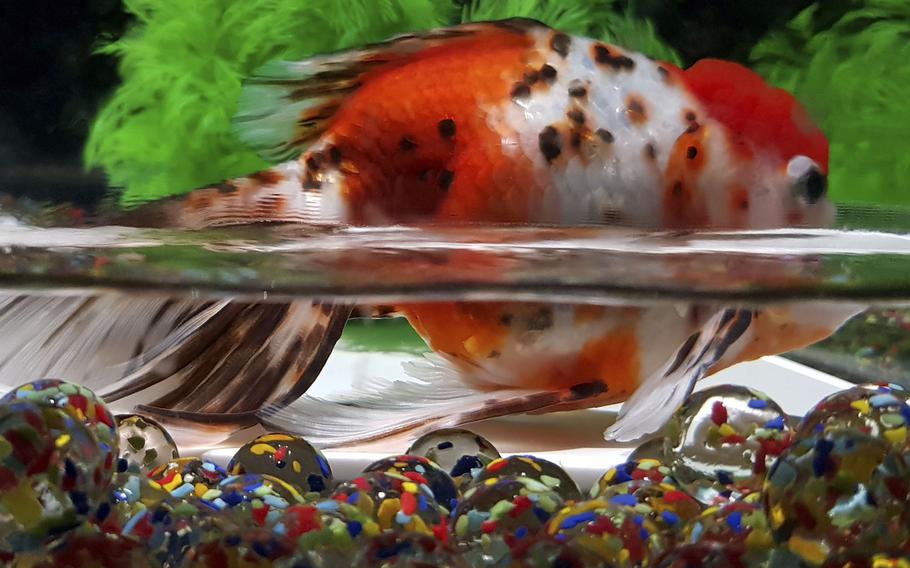
More than 30,000 goldfish are the main attraction at the Art Aquarium, “living art” museum in Tokyo's Ginza district. (Juan King/Stars and Stripes)
One reason to visit the museum is the number of photo opportunities. Photography and video is encouraged but flash isn’t allowed. Visitors can use the lighting from the tanks creatively to get the best snapshots. One picture perfect spot is near the entrance and down a long walkway with glowing Japanese lanterns on the sides and overhead.
Near the end of the exhibit, there is a selfie spot where you stand behind a constructed fishbowl wall that gave the appearance that you were peering out of it. Artistic works by Utagawa Kuniyoshi, an artist from the Japanese Edo Period, consisting of goldfish and carp drawings also lined the wall near the exit.
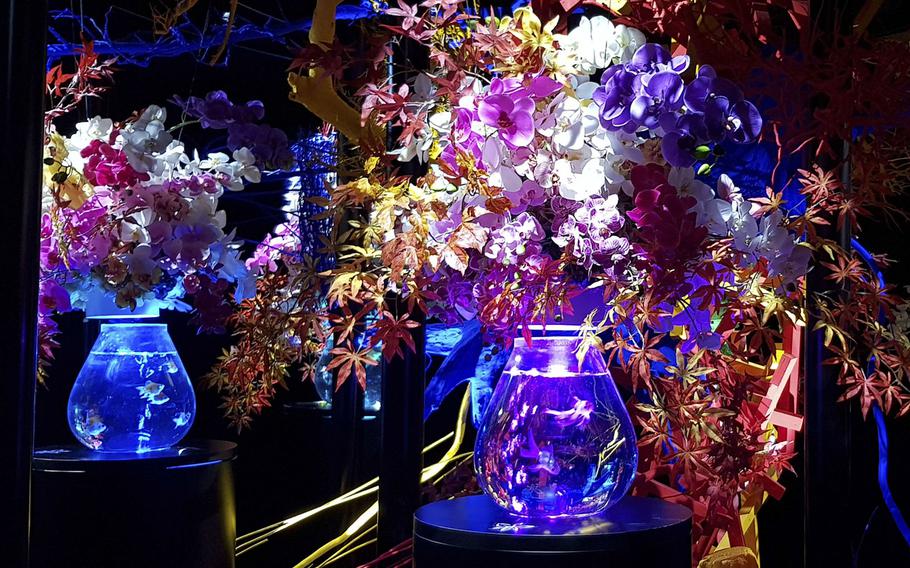
The Art Aquarium in Tokyo's high-end Ginza shopping district hosts artistic displays said to represent the popularity of goldfish during Japan’s Edo period. (Juan King/Stars and Stripes)
The museum gives you about 30 minutes for a relaxing walkthrough to enjoy the fish art and allows for other visitors to come through without overcrowding. There was a directional line marked on the floor leading visitors through the exhibit, although in some areas it was not followed.
Near the exit there is a nice gift shop where you can pick up some goldfish-related gifts and snacks.
On the QT
Directions: A 9-minute walk from Yurakucho Station; take the Central or Ginza exits. 1-3-9 Nihonbashihonchō, Chuo City, Tōkyō 103-0023.
Hours: Open daily, 10 a.m. to 7 p.m.; last entry is at 6 p.m.
Costs: 2,400 yen for junior high age to adults; up to two elementary school aged children are admitted free with one adult. Audio headsets, which are available in English, cost 600 yen.
Food: While food isn’t allowed in the exhibit area, there are plenty of cafes and restaurants in the building.
Information: Tickets can be purchased at the aquarium or online: artaquarium.jp; Phone: 03-3528-6721; There is a 100 yen discount when tickets are purchased online.